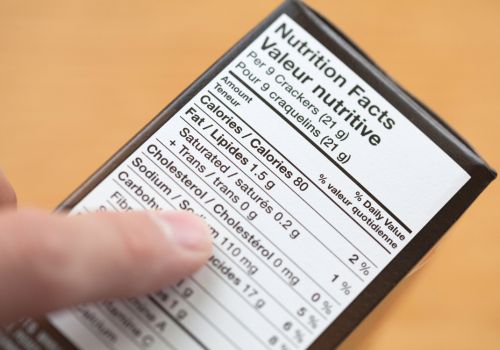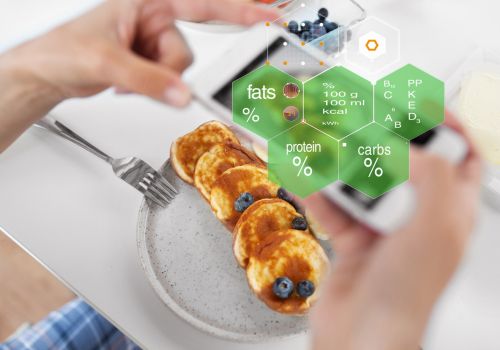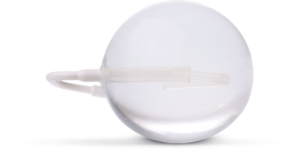Food labels provide important nutritional information about what you’re putting in your body. They advise on what’s in each serving of a product and how many servings are in a package. Knowing how to read nutritional food labels helps you make informed decisions about what to purchase to put into your body. Thus, it’s extremely important to learn how to read nutritional food labels.

Why Are Nutritional Food Labels Important?
Food labels are the little charts located on the side, back, or bottom of food products that you purchase. Nutritional Food labels are important because they inform consumers what’s in their food—what are they getting out of it. Because health and the payoff from all of those hours in the gym show up through our diets, knowing what we eat is important.
Many people consume too much without realizing. For example, let’s say you want a bag of chips. You buy the bag and take it home and eat half the bag. It was mostly air, so it wasn’t that much, right? Well, here’s where understanding the nutritional chart comes into play.
If you read the nutritional chart and find out that the bag had four servings in it, then by eating half, you’ve eaten two servings. If each serving has 230 calories and 16 grams of fat (12 of which are saturated), then you’ve eaten a fairly substantial portion of your daily calories. Further reading on something like a bag of chips will likely reveal little of nutritional value including dietary fiber and additional vitamins and minerals.
Nutritional Food labels help you keep track of what you’re eating, and they help you make informed decisions about what to consume.
What to Look at on Nutrition Labels
Now you know why nutritional labels are important. Here we’re going to delve into how to read them (and what you need to look for).
- Look at the serving size. Healthy things can easily become unhealthy when they’re consumed in excess.
- Look at the “daily value” percentage. This will inform you how much of your daily vitamins, minerals, sodium, cholesterol, etc. based on a 2,000-calorie daily diet. Importantly, your activity levels, weight, and weight goals might mean you’re on a higher or lower caloric intake plan, so the daily value will need to be adjusted.
- Look at the saturated fat content. Healthy fats are not something you need to spend as much time fretting over (don’t let numbers scare you) unless those are saturated fat numbers. If the majority of a product’s fat content is saturated, then it’s not healthy; saturated fats increase your cholesterol, which could increase your risk of heart attack or stroke.
- Look at the cholesterol. While future nutritional food labels may indicate a difference between good and bad cholesterol just as they break down fats, cholesterol is currently only represented by one category. If you have a health condition or are trying to lose weight, look for foods low in cholesterol.
- Look at the carbohydrates. Carbs get a bad reputation especially with protein-centric and ketogenic diets prominent; however, not all carbs are bad carbs.
- Look at the breakdown of carbs. High dietary fiber and low sugar content is positive while the inverse is negative.
- Look at the vitamins and nutrients. Iron, B-vitamins, zinc, calcium, etc. are all in our food. We need a certain level of vitamins and nutrients every day to thrive and survive. Look to see what vitamins and nutrients are in your food as well.

How to Use Nutrition Labels to Calculate Nutrition at Home
While it’s definitely helpful to know how to read nutrition labels at the grocery store and in your pantry, how does that help you while cooking?
Understanding nutrition labels while cooking can enable you to break down the nutritional information of each component of a dish you’re making and to know exactly what you’re eating and how much you’re eating. Food scales and apps such as MyFitnessPal can be useful for using nutrition labels to calculate the nutritional value of your own recipes.
Learning how to read nutritional food labels is incredibly empowering. Being informed allows you to make smart choices about what you put into your body.
For example, if you know that your goal is to eat high protein, low cab, then you’ll have a much easier time making a selection at the store. The more often you read nutrition labels, the better you’ll be at reading them.
Importantly, not knowing how reading nutritional food labels works can lead to you self-sabotaging your efforts at the gym and elsewhere by unwittingly eating something that’s bad for your goals.
We at Spatz Medical believe you should be informed about how nutrition works as well as all of your options pertinent to weight loss. In addition to eating a healthy diet, you may also want extra support, like that afforded through our revolutionary Spatz3 gastric balloon. If you want to accelerate your diet and exercise results, contact us to see if you qualify for a Spatz3 gastric balloon.


